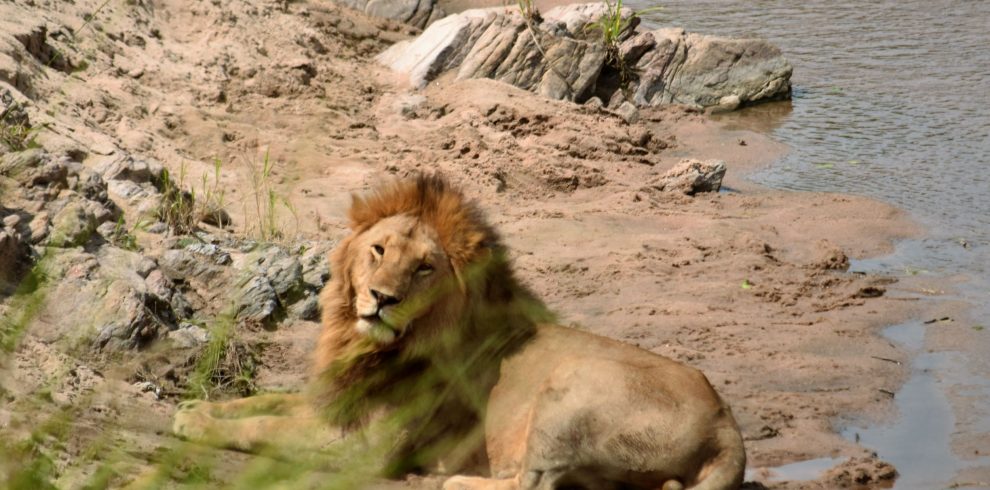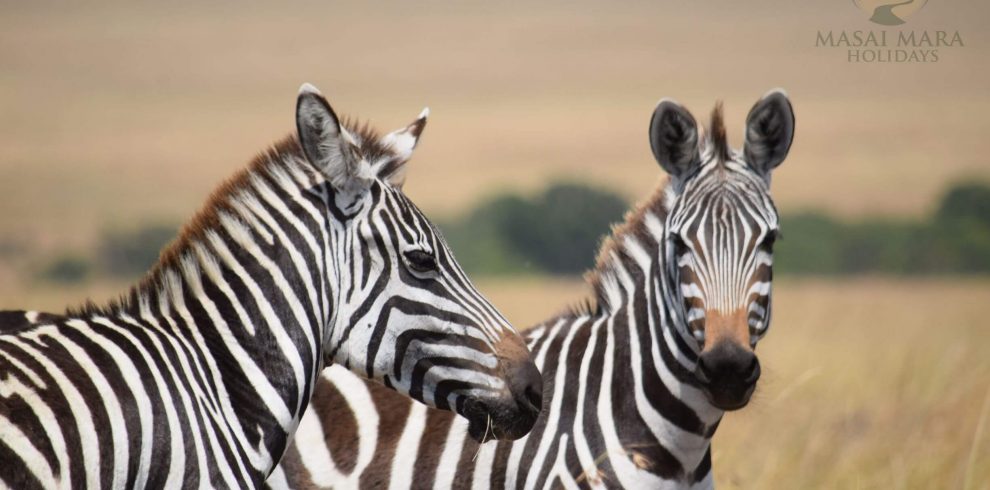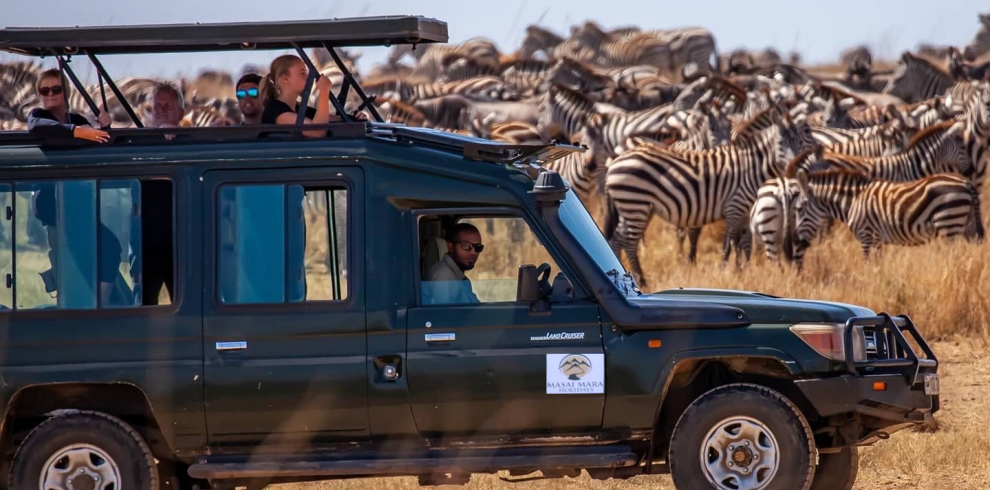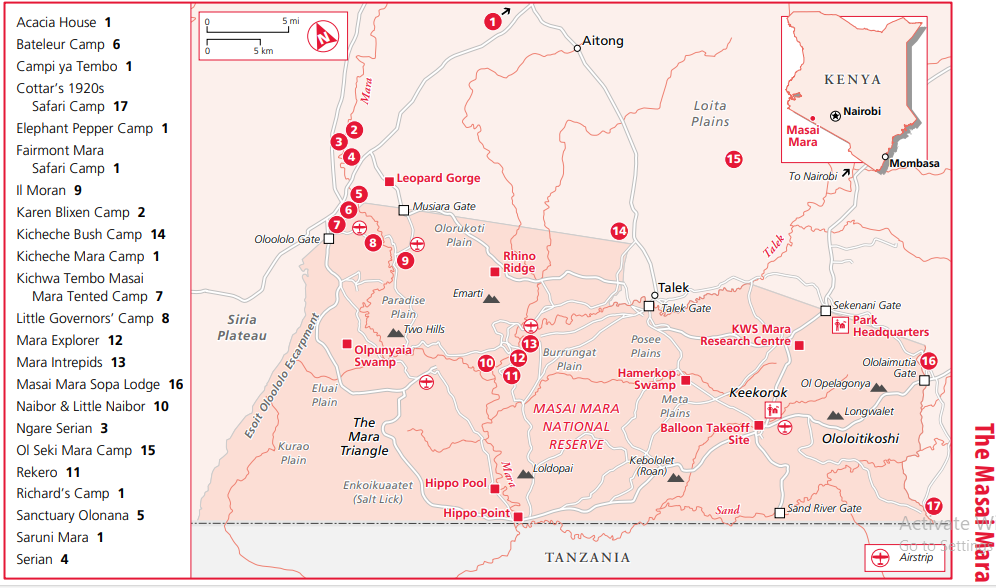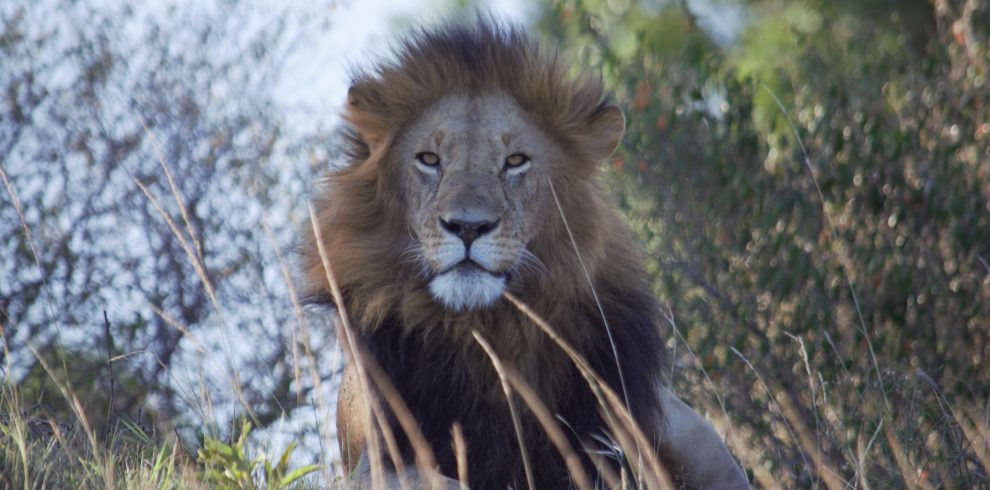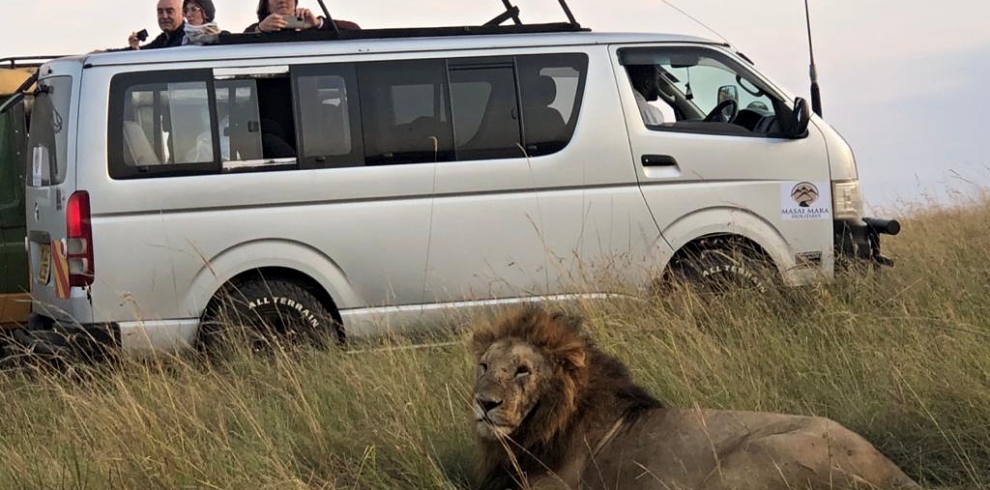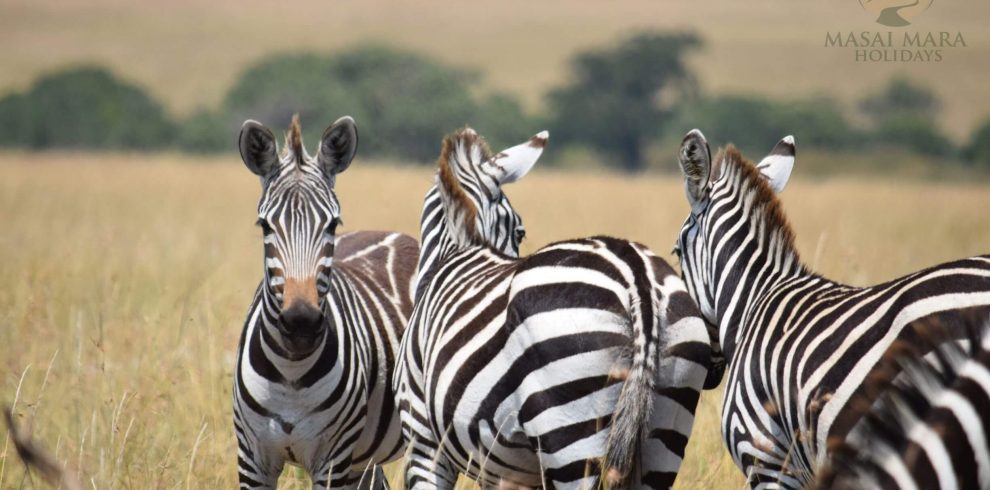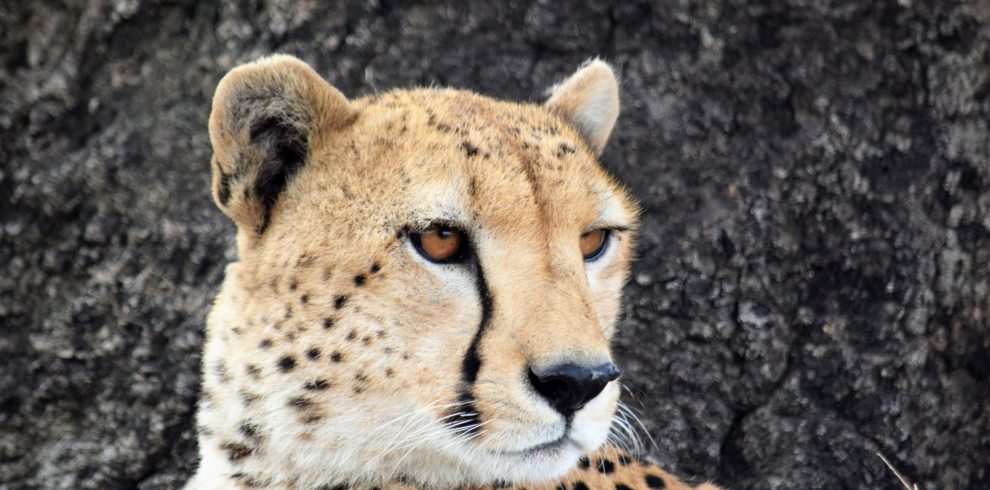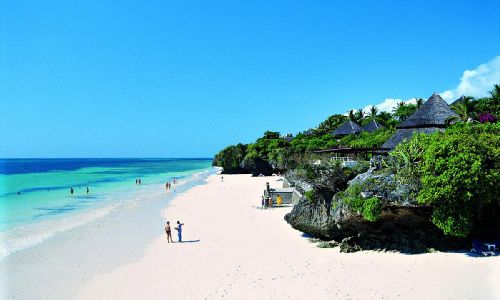Nestled in Kenya’s South Western region is the magnificent Masai...
Karibu! Kenya Safari Masai Mara
Kenya’s premier safari destination, Masai Mara National Reserve is an iconic Savannah wilderness, a home to a remarkable variety of wildlife, including the Big Five (elephant, lion, leopard, buffalo and rhinoceros), as well as other iconic species such as cheetahs, giraffes, zebras and an abundance of bird species. Masai Mara Safari is famous for hosting the annual Great Migration, which is one of the most impressive wildlife spectacles on Earth. Every year, between July and September, more than one million wildebeest, accompanied by zebras and gazelles stomp this vast reserve which is the peak action for a safari in Masai Mara. Located in the south-western part of Kenya, Masai Mara Kenya covers an area of 1,510 square kilometers, a northern extension of Serengeti National Park in Tanzania. The reserve is named after the Maasai people, the traditional inhabitants of the region, and their word for “spotted”, which describes the landscape dotted with acacia trees, shrubs and bushes.
At Masai Mara Holidays, we offer well crafted Maaai Mara National Reserve safaris offering a taste of the best of this iconic destination with options for 4×4 road drive safaris or fly-in safaris in the Masai Mara.
Choose your trip
Popular Masai Mara Safaris For You
Browse through our Masai Mara safaris that stand out as the most requested and booked holidays and comprise of itineraries to the best national parks in Kenya combined with top attractions in Tanzania and Uganda. These safari holidays are flexible in comfort to suit all budgets, check out these carefully crafted Masai Mara Packages and request for a free quote
Start Planning Today!
A Guide to Safari in Masai Mara National Reserve
A detailed guide to Safari in the Masai Mara National Reserve to include; Things to do, Wildlife in the Park, Where to stay, Travel Guide and the Geography of the Park
There are many ways to explore and enjoy Masai Mara Africa, depending on your preferences, budget and time. You can choose from various safari options, such as game drives, walking safaris, hot air balloon safaris and night drives. You can also visit local Maasai villages, take part in cultural experiences, or indulge in birdwatching.
Wildlife Safaris
Wildlife safaris in Masai Mara are centered mainly around game drives which are the main activity of our Masai Mara holidays, whether you are heading out to search for elephant silhouettes or wishing to get packed net to a family of cheetahs on a hunt, game drives in Masai Mara unfold the action of perfect animal kingdom away from what you might have watched on Nat Geo. 
Night Game Drives
Nights Games drives in Masai Mara Africa are available in the private conservancies but prohibited within the main Reserve. These games drives are mainly focused on spotting nocturnal species to include big cats which are most active in the night in fact most of all the hunting by lions and leopards happens after night fall. Other wildlife species to look out for include; hyenas, bush babies, porcupines, aardvark, genets, civets, and honey badgers.
Horse Back Safaris
Game viewing on a horseback is another intriguing way to have your Masai Mara Kenya Safari. This activity is mostly recommended for saddle fit riders, the rides range from shorter 2 hour rides to multi day itineraries offering about 6 or more hours in the saddle each day. The two hours rides can be taken on by Amateur riders.
Balloon Safaris
Balloon safaris in the Masai Mara offer a prefect way to explore the Savannah from a majestic aerial view. Floating across the plains with 360 degree views of what is beneath the park is an experience that is incomparable. It even gets better during the migration season with a chance to track the herds from above accessing the remote parts of the park that cannot be explored with the vehicles. Flying one hour, the balloon lands where you will be treated to a luxurious champagne bush breakfast served under a giant acacia tree.
Walking Safaris
Walking safaris offer a much more immersive experience outside the traditional African driving safari in Masai Mara. This experience takes you walking through the less wildlife infested area of the park with guidance of an armed ranger. You will have the opportunity to explore the park’s flora and learn about the medicinal properties of different plants from a local Maasai warrior. You will also have the chance to spot some animals up-close. Most lodges and camps offer guided walking safaris for approximately USD 20 per person.
Masaai Cultural Visits
Visiting the Maasai people is an essential part of any Masai Mara holiday. What makes the Maasai Special? These individuals have a strong bond with some of Kenya and Tanzania’s savanna national parks and have worked to preserve these rich ecosystems. The Maasai have set up eco-friendly shelters known as Manyattas within the park’s conservancies. A visit to a Maasai Manyatta offers the chance to learn about the tribe’s culture and lifestyle, including their energetic dances. You’ll even be given a Maasai name based on your personality. Lodge and camp staff can arrange these visits.
Birding Safaris
Masai Mara National Park is a paradise for birds and birdwatchers; over 400 species have been recorded, with grassland and wetland birds especially well represented. Martial eagle, long created eagle, crowned crane, ostriches and bateleur are common, while large numbers of vultures follow the migration feeding in remains of those that die of exhaustion or predator attacks. The Mara River and its tributaries are forested along the banks, providing ideal habitat for exciting birds such as the Ross’s Turaco, black and white casqued hornbill, blue flycatcher and the narina trogon.
You must have heard of The Great wildebeest Migration in Masai Mara Africa, a seasonal movement of large herds of an estimated 2 million wildebeests accompanied by 500,000zebras, 250,000 Thomson’s gazelle, 70,000 Impala and 30,000 Grant’s gazelle from Tanzania’s Serengeti National Park crossing to Masai Mara National Reserve. Time your Mara Mara safari for July to Early September, and you can prepare for one of the world’s great wildlife dramas, a hoofed mob of a million-plus wildebeest moving in masses across grass-filled plains, over hills, and through rivers besieged by hungry crocodiles and watched by salivating lions and excitable hyenas. 
- Calving: This phase occurs from January to March in the southern Serengeti, where the wildebeests give birth to over 500,000 calves within a span of a few weeks. This is a time of plenty for both the herbivores and the predators that prey on them.
- Rutting: This phase occurs from May to June in the western Serengeti, where the wildebeests mate and form temporary pair bonds. This is also a time of intense competition and fighting among the males for access to females.
- River Crossing: This phase occurs from July to October in the northern Serengeti and Masai Mara, where the wildebeests face their biggest challenge: crossing the Mara River. The river is full of dangers such as crocodiles, hippos, and strong currents. The wildebeests have to overcome their fear and instinctively follow the leaders to cross the river. This is a time of high drama and mortality for both the herbivores and the predators that ambush them.
- Grazing:This phase occurs from November to December in the eastern Serengeti, where the wildebeests enjoy the fresh grass that has sprouted after the short rains. This is a time of relative peace and tranquility for both the herbivores and the predators that coexist with them.
The Great Migration in the Masai Mara is a unique and awe-inspiring spectacle that attracts thousands of visitors every year who come to witness this natural wonder.
The Masai Mara is divided into the Masai Mara National Reserve and a number of private conservancies sprawled in the north and each with a number of camps and reserves. Most private conservancies offering a range of activities not available in the reserve itself to include; night game drives, escorted walking safaris, and horseback safaris. Masai Mara National Reserve itself is divided into three distinct parts; eastern sector runs southeast from the Mara and Talek rivers to the Ngama Hills, the central sector lies cupped between these two rivers north of their confluence, and the western sector is flanked by Oloololo Escarpment and the Mara River. The east carries the heaviest traffic, which can detract from the wilderness atmosphere. Bear in mind that game drives are generally confined to the same sector as the lodge or campsite. Visitors with more than 3 nights at their disposal could divide their time between lodges in different sectors.
Ngama Hills and the Eastern Plains
Accounting for about half of Masai Mara Kenya, the eastern sector is the closest to Nairobi and the most visited. Dozens of campsites and lodges are set within its boundaries or lie immediately outside them. The most prominent geographical landmark, the quartzite Ngama Hills, towering above the main Sekenani Entrance Gate and are visible from all corners. The smaller Ol Opelagonya and Ololoitikoshi hills both lie in the far southeast towards Ololaimutiek Gate. The rock-strewn grassland of these hills does not support the wildlife volumes associated with the plains below, but its dense thicket patches are a favored haunt of the reserve’s last few dozen remaining black rhino, while the margins harbor buffalo, dik-dik, and impala. The flatter plains that run from the base of the Ngama Hills to the banks of the Mara river form the classic East African landscape of short grassland interspersed with a parsimonious scattering of acacia and other trees. The main roads through this part of the reserve are somewhat rutted and the relatively heavy traffic seems to be a deterrent to wildlife, so it is generally more productive to stick to the maze of regularly intersecting tracks that run between them. Lion and cheetah are common in this area, along with topi, gazelle, eland, ostrich, and kori bustard. The park supports a much higher elephant density than expected in such open terrain. Other landmarks include the long-serving Keekerok Lodge, which is the launch site for early morning balloon trips. Further south, the seasonal Sand river more or less follows the Tanzanian border west towards its confluence with the Mara Mara National Reserve. Practically at the border, the South Mara Bridge is the only crossing point between the reserve’s eastern and western sectors and overlooks a hippo pool that is a popular picnic spot
Mara and Talek Rivers
The Mara River and its tributary the Talek are the only perennial waterways to flow through the Masai Mara National Reserve. Dotted with dozens of deep hippo pools, the Mara river supports varied aquatic wildlife that includes hippo, crocodile, and otter, along with riverine birds such as hamerkop and African darter. The lush ribbon of riparian forest that follows both rivers for much of their length is densely populated with leopard, vervet monkey and bushbuck, as well as a selection of birds that is strikingly different from those in the rest of the park. This includes the brilliantly colored Schalow’s and Ross’s turacos and the melodic white-browed robin-chat. One of the most spectacular events in the Serengeti-Mara migration is the wildebeest crossing of the Mara river. This might happen several times during the migrant wildebeest’s 3-month Masai Mara tenure. There are eight major crossing points, of which the four most regularly used lie along a 5-km (3-mile) stretch of the Mara upriver of its confluence with the Talek and overlooked by the Mara Serena Safari Lodge. Often, wildebeest will congregate in their thousands on the banks for days before one impatient individual takes the plunge, triggering a lemming-like stampede that provides rich pickings to the waiting crocodiles. An estimated 3,000 wildebeests perish annually while crossing the Mara, but numbers are readily replenished by the average of 400,000 calves born in the Serengeti every January to February.
Central Plains
Located in the heart of Mara Mara Africa and serviced by a handful of upmarket camps, the untrammeled plains of the central Masai Mara flanked by the Mara River to the west and the Talek to the south – offer exceptionally reliable game viewing, particularly when it comes to big cats. Dominated by a long succession of thickened males, the legendary “marsh lion” pride hangs around the grassy verges of Musiara Swamp and Governor’s Camp and is habituated to vehicles. The open grassland around Paradise Plain is arguably the best place in Kenya to look for cheetahs, while several generations of habituated leopards inhabit the vicinity of Leopard Gorge, a short drive outside the reserve from the Musiara Gate. By contrast, the prominent Rhino Ridge overlooking Paradise Plain seldom lives up to its name. Crisscrossed by motorable tracks, the short grass plains north of Rhino Ridge are densely excavated with aardvark holes that now serve as dens to spotted hyena, bat-eared fox, and black-backed jackal. Two localized birds associated with this part of the park are Denham’s bustard and the lovely Rufus-bellied heron that inhabits Musiara Swamp. The central plains are spectacular for an African Safari Masai Mara from August to October when zebra and wildebeest congregate there in their tens of thousands. The best place to view large numbers of hippo and wildebeest – and with luck the occasional river crossing – is Lookout Hill, located opposite Serena Lodge.
Mara Triangle
This most westerly sector of the Mara Mara Kenya is also the oldest, having first been gazetted as a 510-sq-km (197-sq-mile) game reserve in the late 1940s. It is the most scenically dramatic part of the reserve, set below the 400-m- (1,312-ft-) tall Oloololo Escarpment and studded with isolated granite hills known as koppies. The open grassland supports dense seasonal concentrations of migrant zebra and wildebeest. The Mara Triangle is good for spotting big cats and other members of the Big Five, although rhino are not very common. Roan antelope and African wild dog were once widespread here, but have not been seen since the late 1980s, although plans are afoot to reintroduce the former from Ruma National Park, their only extant haunt in Kenya. The Oloololo Escarpment along the western boundary is a good place to spot the dainty klipspringer antelope, the rock hyrax and spectacular Verreaux’s eagle.
Wildlife
Masai Mara Kenya is home to over 95 species of mammals and over 570 species of birds. It is one of the best places in Africa to see the Big Five: lion, leopard, elephant, buffalo, and rhinoceros. The lion population in Masai Mara is estimated at around 900 individuals, making it one of the largest and most stable in Africa. The leopards are elusive but can be spotted resting on tree branches or hunting at night. The elephants are abundant and can be seen roaming in large herds or bathing in the rivers. The buffaloes are formidable grazers that form massive herds that can number up to 2,000 individuals. The rhinoceroses are rare but can be found in some areas of the reserve where they are protected from poachers.
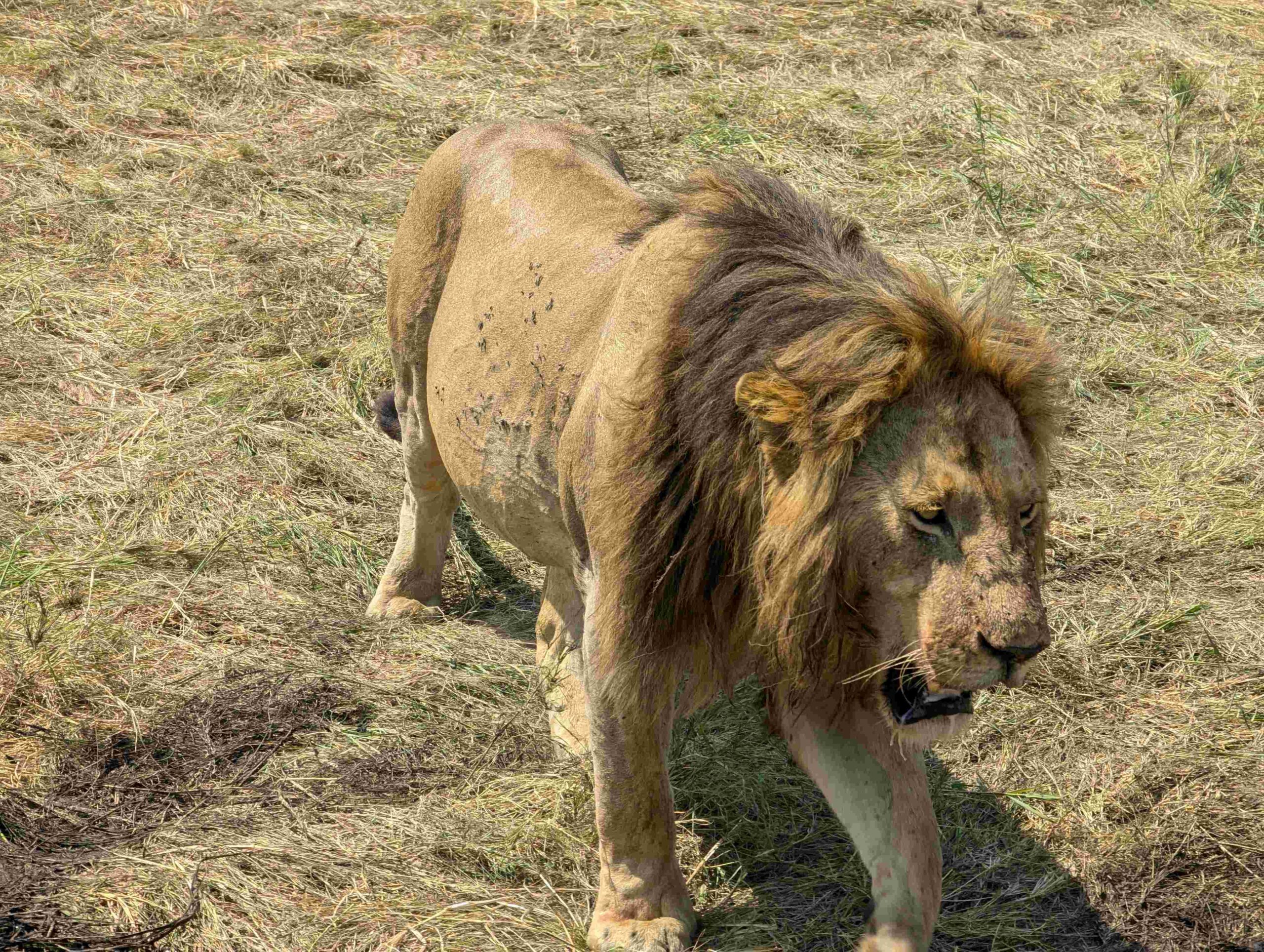
The camp or lodge you choose for your safari in Masai Mara greatly determines the kind of experience you will have on your trip. There are several lodges and camps located inside Masai Mara National Reserve, the private conservancies and just outside the park. These accommodations offer different budgets since comfort levels from luxury to camping budget friendly options. Some of the important aspects to consider while choosing your accommodation in the Masai Mara include; your budget, the size of the camp, location and the level of service. You will receive a more personal attention staying at a smaller side camp/lodge than at larger ones. The bigger accommodations tend to stick on a set schedule, while smaller ones can be willing to amend schedules based on the preference of a guest.

Your travel companion to plan your next safari to Maasai Mara National Park
Masai Mara National Park Map
Park Entry Fees 2024 -2025
As of 2024 – 2025, a few revisions were made to the park fees in the Masai Mara to include an increment the park entry fee and the applicable of the 12 hour validity of the park fees. For non Resident visitors to Masai Mara Game Park Kenya, park entry fee is USD 100 per Adult per day visiting from January to June, whereas for travel from July to December, each adult is required to pay USD 200 per day. Non resident children of age 9 to 17 years old are charged USD 50 per child per day all year long whereas children of the age 8 years and below are free of charge.
Weather
Masai Mara National Game Reserve is crossed by the tropical climate just like most of Africa, witnessing two seasons; the wet and dry season, temperatures rise to upto 27 degrees Celsius in the dry season and drop as low as 13 degrees Celsius in the wet season with rainfall levels averaging 1400 millimeter in a year. March to May is the longest rainy season with the highest rainfall levels, if not for the good deals on safaris, this is not a good time to visit the Masai Mara. June to August is generally dry and sunny coinciding with the great migration, this is the peak/busiest season for travel in the Masai Mara. September to October offers dry sunny weather with a few scattered rains warming up to the second short wet season of the year in November to Early December.
Choose your trip
Best Selling Masai Mara Packages
These Masai Mara Packages promise a true classic African Savannah safari crafted to meet your preferences and budget. Are you an adventurer or you are simply seeking a honey moon getaway? Our holidays are customizable to combine some of East Africa’s best safari attractions to include Masai Mara National Reserve, Serengeti National Park, Beach Holidays in Zanzibar or Mombasa, combine a hike to Mount Kilimanjaro, Mount Kenya or even consider an extended trip to Bwindi Impenetrable forest to undertake mountain gorilla trekking
FAQs
Frequently Asked Questions About Safari in Masai Mara National Park addressed by an our seasoned Masai Mara safari experts at Masai Mara Holidays (Ltd)
Masai Mara & Kenyan Game Parks Safari Holidays
Exploring Kenya's top Game parks with the Masai Mara can range anywhere from 4 days to upto 2 weeks depending on how much time you have and your budget. Nairobi is the capital of Kenya, with a few attractions worth exploring before safari including; Nairobi National Park, Giraffee Centre and The Sheldrick Elephant Orphanage. The most popular Nationals parks to combine with the Masai Mara in Kenya include Amboseli National Park, that offering stunning view of mount Kilmanjaro and big herds of elephants, Lake Nakuru National Park, a birders' paradise and sanctuary to African black rhinos, Tsavo East and Tsavo West National Parks, the biggest wildlife reserves in Kenya, Samburu National park, the only stop in the traditional safari circuit in Northern Kenya. 
Masai Mara Kenya and Tanzania Safari Holidays
Masai Mara Holidays and Tanzania mainly focus on Tanzania's Northern Circuit Parks which include; Serengeti National Park, that is a continuation of the Masai Mara Ecosystem in Tanzania, Ngorongoro Crater, a caldera that supports a staggering number of wildlife all year long, Lake Manyara National Park, popular for its salty lake that is home to thousands of flamingo and the tree climbing lions in the park, Tarangire National Park, a home to large herds of elephants and big number of Boabab trees. In Arusha, you can dare yourself to a hike to Mount Meru or Mount Kilimanjaro, the highest mountain in Africa, allow at least 5 nights for the climb. 
Masai Mara Safari & Beach Holidays
There is no better way to conclude a Masai safari holiday than considering 2 or more nights at East Africa's beautiful coastline. Between Mombasa and Zanzibar's pristine beaches lies a perfect spot for you to consider for your beach holidays.
Kenya's Easterly coastline in Mombasa is a perfect stop for those reaching the sun, sand and sea. The shoreline boasts white sand beaches, offshore coral reefs, sunny weather and historical towns that are home to Swahili culture. From concluding your Masai Mara safari Holidays in Nairobi, you can either fly directly to Ukunda Airport in Mombasa to continue to your booked resort hotel or take the SGR train from Nairobi that connects directly to Mombasa. You can also combine the Masai Mara, Lake Nakuru, Amboseli and Tsavo Nationals Parks to conclude with a drive to Mombasa at the end of the safari for your beach stay.

Masai Mara Safaris & Gorilla Trekking Holidays
Our Masai Mara Safari Holidays that include gorilla trekking can either be safaris in Kenya with the Masai Mara, Tanzania Safaris or Beach Holidays that continue into the highlands of Bwindi Impenetrable Forest National Park in Uganda to see the endangered mountain gorillas that live freely in these highlands. 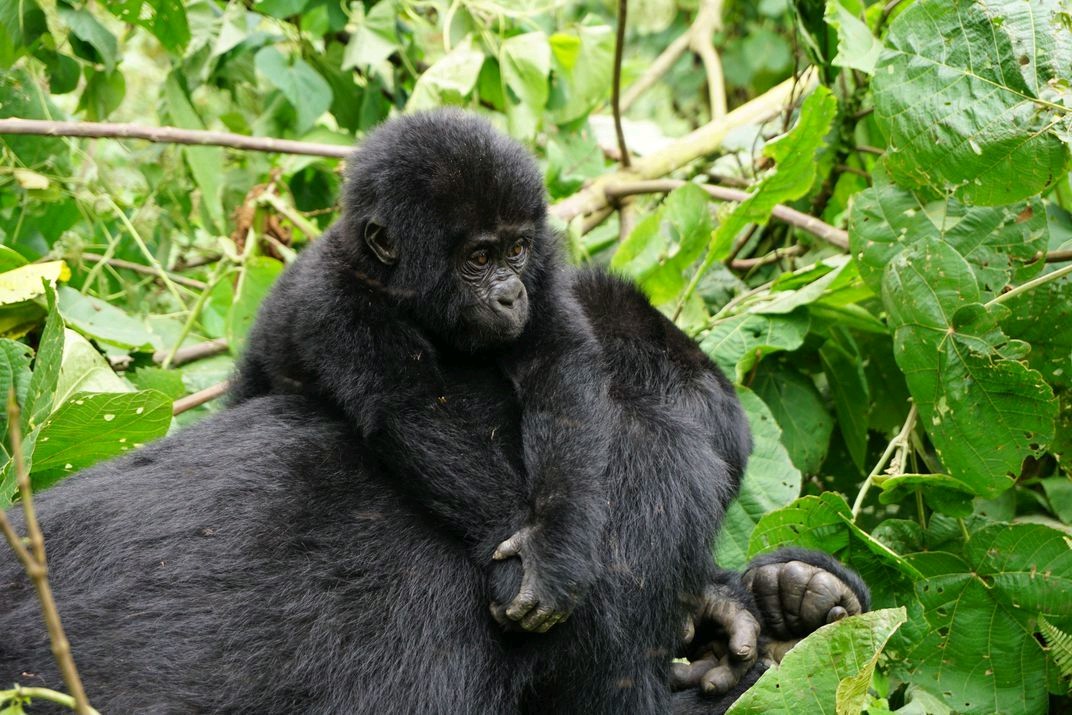
Masai Mara National Park is an all year round destination, the best time to visit depends on what you are wish to experience on your visit. The migration of wildebeest from the Serengeti to Masai Mara National Reserve commences in July and continues through to October; it’s when accommodations are at a premium and when Mara Mara National Reserve is most crowded with visitors. Many camps close during the rainy seasons; the “short rains” happen in November, while the “long rains” fall in April and May. 
The park entry fee in Masai Mara as of 2024 is USD 200 per adult per day and USD 50 per child aged 9 to 17 years old per day for the high season (July to December). For the low season months of January to June, adults pay USD 100 per day while children are charged USD 50 per day. Most safaris offered by safari agents will include transfers, park entrance fees, 4x4 game drives with a guide, meals, and accommodation. It is recommended to compare quotes from different tour operators to find the best quote. Booking your safari in Masai Mara directly with a lodge or camp may result in all-inclusive prices, which cover accommodation, meals, and game activities. However, transfers to and from the park may not be included, so it's important to factor those in as well. Additionally, budget for airfare, visas, tips, and souvenirs. The price range of your Masai Mara tour will usually be determined by the type of safari package you choose. In Kenya, there are three main types of Masai Mara packages available, including luxury, midrange, and budget packages.
Luxury Safaris in Masai Mara Game Reserve
If you opt for a luxury Masai Mara safari, you can expect to be accommodated in top-of-the-range lodges and camps that offer a host of luxuries like spa treatments, hot showers, comfortable beds, and fine dining experiences. Prices for luxury packages range from USD 400 to USD 1500 per person per night sharing a double room. If you are traveling alone, you should expect to pay a single supplement. Additionally, most luxury packages include chartered flights to and from the park, but you can also opt for ground transfers using a spacious 4x4 pop roof safari Land Cruiser.
Midrange Safaris in the Masai Mara
For a balance between luxury and budget, midrange safaris in the Masai Mara offer moderate accommodation that is both comfortable and reasonably priced. During peak season, you can expect to be accommodated in a comfortable lodge or camp at a cost of $180 to $250 per person sharing per night on full board. However, prices tend to drop a bit in the low season, making midrange packages even more affordable.
Budget Masai Mara Safaris
If you're on a tight budget, there are plenty of budget Masai Mara safaris available that aim to offer the lowest prices possible. To cut costs, most budget packages include tented camps outside of the Masai Mara, but relatively near the closest gate of the park. Prices for budget packages can range from $150 to $300 per person sharing per day, depending on the number of people in your group. However, even with a budget tour, your package should still include park entrance fees, transportation, meals, and accommodation.
Masai Mara National Reserve is an ideal destination for travel with children; while there may be some pre-tour requirements, such as vaccinations, the adventures and experiences that await are ultimately worth it. Witnessing the Great Migration with your kids is undoubtedly one of the most unforgettable and memorable experiences you can share as a family. But even outside the migration season, watching wildlife up close, witnessing lion cubs at play, and cheetahs darting across the plains are all moments your children will treasure for years to come. When planning your safari, it's crucial to let your operator know that you'll be traveling with children so that they can customize the experience to suit your family. Kids often adapt to new environments and cultures easier, and watching them interact with Maasai children will create memories that will last a lifetime. Educating your children on new languages and traditions will also ignite their curiosity and interest. For comfortable lodging, opt for midrange and luxury accommodations that cater to children's needs. Safari lodges are especially child-friendly, with the flexibility to add an extra bed and offering unique programs for children to engage in while adults embark on game drives and other activities. A combination of a Masai Mara safari and beach vacation is an excellent way to keep your kids entertained and happy. After witnessing the beauty of the Mara, bask in the sun and sand for the ultimate family holiday
Booking a trip to Masai Mara should ideally be made six to nine months in advance, especially for peak season travel in July and August during the Great Migration phenomenon, often regarded as the most incredible wildlife show on the planet. Travel agents, camps, lodges, and Kenya safari companies can efficiently assist in planning and booking your safari, which can also include cultural Maasai visits, bush walks or hot air balloon safaris, night game drives, and horse safaris. A well-planned and booked Masai Mara Safari tour through a reputable Kenya operator provides a hassle-free experience and an opportunity to secure a spot in one of the top-notch lodges and camps in Masai Mara.
At Masai Mara Holidays Ltd, we are a local operator company in East Africa known for its best Masai Mara safaris, as recommended on TripAdvisor. Our safari experts are always readily available to assist with planning. We offer various safari options to choose from based on combinations with other parks, such as the Rift Valley Lakes, Amboseli National Park, Samburu National Reserve, Serengeti National Park in Tanzania or a mountain gorilla trek in Uganda or Rwanda.
Maasai Mara National Reserve is a unique place with different ecosystems, this unique ecosystem is the sole reason Masai Mara National Reserve attracts a lot of people from different parts of the world. Both directly or indirectly, humans and wildlife are bound to be in conflict, the Mara Triangle Conservancy has come up with rules to make sure that both coexist in harmony.
- No littering in Masai Mara National Reserve, cigarette, litter and plastic bottles can be detrimental to the environment.
- Noise making is not allowed cause it can change the animal behavior in the Mara natural habitat
- The recommended speed limit within Maasai Mara National Reserve is 50 kilometers per hour, this speed or less should be maintained even while in the game
- Vehicle during the game drives should be 25 meters away from the animals, at that recommended distance, one can still take a comfortable picture and it keeps the animals behaving the way supposed to.
- While on a game drive in Maasai Mara National Reserve, animals have got right-of-way, this is because they were there before and deserve to put as first priority we were
- No driving off-road other words, avoid off tracking while in the park, employ high-tech equipment like binoculars to be able to view from a distance without having to disturb the animals.
You can either fly or drive to Masai Mara from Nairobi or other major cities in Kenya. Flying is faster and more convenient, but also more expensive. Driving is cheaper and more adventurous, but also more time-consuming and challenging. You will need a 4×4 vehicle to access some parts of the reserve.
By Road
Most visitors come to the Mara Mara National Reserve as part of an all-inclusive safari package, commencing with a cramped drive in a minibus from Nairobi. If you want to get there by road, opt to be driven in a 4×4 (preferably a Land Cruiser), which will then be used as your game-drive vehicle throughout your stay; count on spending around $250 to $350 per day for the privilege. 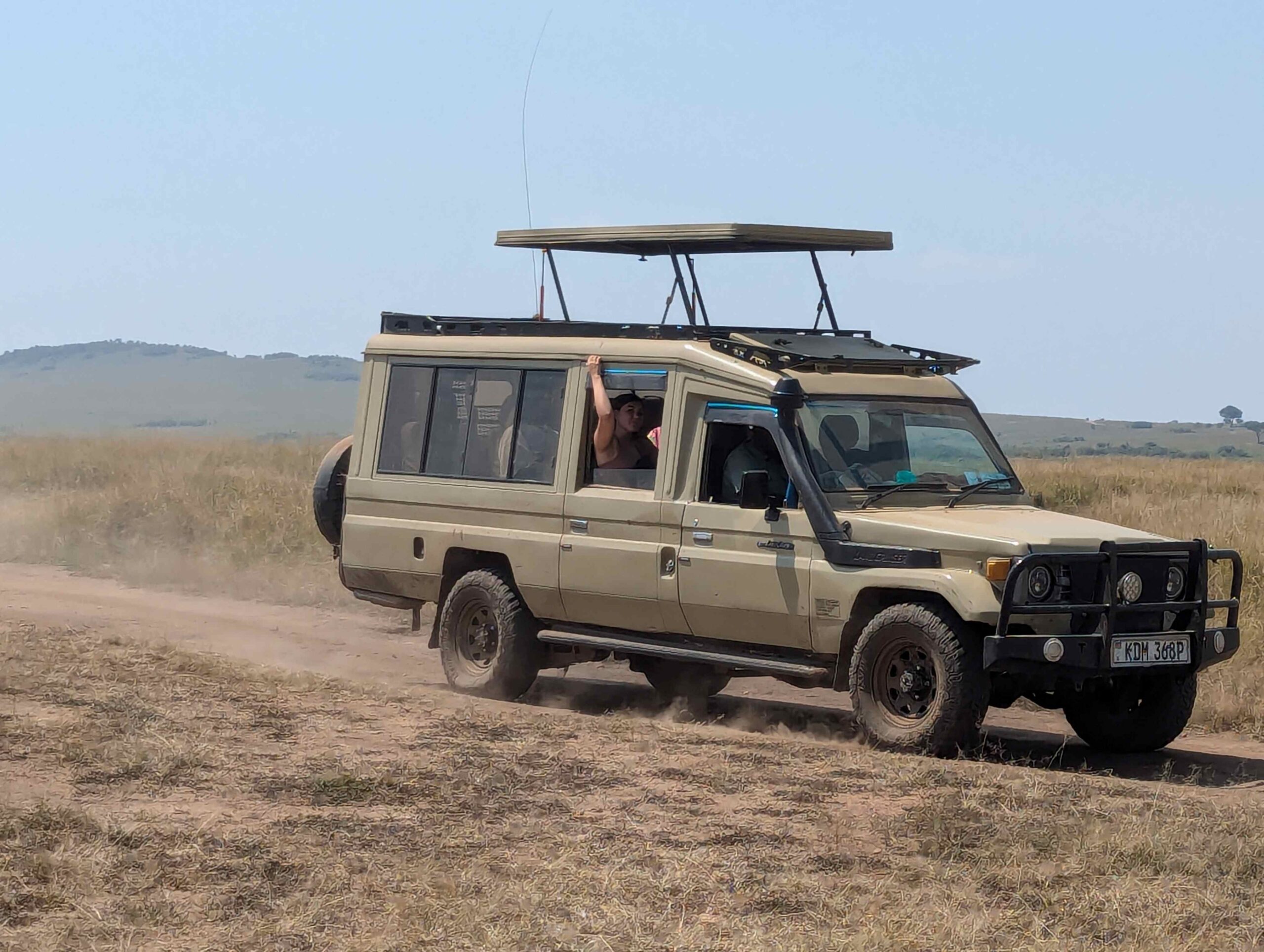
By Air
A far better option and the only one if time and comfort are of any consequence is to fly directly into Mara Mara National Reserve. Most lodges and camps are within 45 minutes of the nearest landing site (there are several), and a few places have private airstrips, too. There are daily scheduled flights from Nairobi (AirKenya and Safarilink have two flights each), the coast, and Nanyuki (for connections from Laikipia). Private charters also use these strips. Most lodges will provide transfers from the airstrip, meaning that your game drive begins shortly after you touch down. Generally speaking, your tour operator, who will book all your accommodations, will reserve your flights and ensure that you touch down at the correct landing strip
Choosing to spend your time in the Masai Mara in a private conservancy or the Masai Mara National Reserve itself depends on what kind of safari you are looking; private conservancies bordering the reserve offer night game drives and walking safaris which are not permitted in the main reserve and as an added bonus, private conservancies are much less crowded than the main reserve, as only guest of the camps located in the conservancies are allowed to do games drives within. While safaris in the Masai Mara private conservancies may sound like a luxury, indeed they are a luxury, most camps and lodges are high end properties that are no fit for budget travelers. The real advantage of safaris in Masai Mara National Reserve itself is the quick access to the migration, as most routes of the migration, river crossing points are located here. Another advantage is that most of the wildlife rich sections of the Masai Mara are located in the reserve itself, so ideally there is more wildlife to see. The added bonus is that safari in Masai Mara National Reserve is fit for all travelers are the park and along its borders is served by a wide range of lodges and camps that suit budget, midrange and the luxury travelers
Tipping along your safari in Masai Mara Kenya is common way to appreciate a service rendered, you can tip drivers, porters, hotel staff and guides and other staff for a service that has been good. A good tip can range anywhere within USD 5 to USD 10 for hotel or restaurant staff and USD 15 to USD 25 per day for safari guides and rangers. Tips on safari in Masai Mara Kenya are highly appreciated but not generally expected
Serengeti National Park is a continuation of Masai National Reserve in the south separated by the Kenya - Tanzania land border, ideally these two park share the same ecosystem, and the great migration of wildebeest. Between these two parks, the Masai Mara generally receives more visitors owing to the fact that Nairobi, Kenya's capital is the gateway to Eastfrica, as it receives a relatively good number of international flight compared to any other city in East Africa, this makes Masai Mara National Park easily accessible compared to Serengeti National Park. An added bonus is that the Masai Mara (1,530 sq. km) is a smaller fraction of Serengeti National Park(14,763 sq. km) making it easily explored with a minimum of 3 to 4 Days on safari, whereas, visiting Serengeti National Park, most safaris are concentrated within central Serengeti and if you wish to explore more parts, you either have to fly or spare about a week or more to explore the parks various sections. If the great migration is your primary focus, Serengeti National Park is the ultimate home to the migration, as the herds spend 3 quarters of the year there, only taking a holiday in Masai Mara from July to late September. Generally both the Masai Mara and Serengeti National park are two top safari destinations in East Africa, which ever you decide to visit, expect world class game viewing encountering a great tone of wildlife.
To cut down on costs while still enjoying a comfortable safari experience, consider staying in a lodge or camp outside the park, booking in the off-season (March - May, November) and researching for cheap flight options. With these tips, you can make the most of your Masai Mara safari without breaking the bank.
Balloon safaris in Masai Mara Game Reserve Kenya are very popular and certainly a unique way of experiencing a safari in Masai Mara. In fact, The Masai Mara Kenya has to be one of the very best places on earth for ballooning. Soaring across the savannah, sometimes so close to the ground that you swear you could reach out and touch the trees and animals below, a balloon safari is the ultimate predawn adrenaline rush. Floating over the plains and above the forest that straddles the Mara River, you get an entirely unexpected perspective on this animal-rich world, particularly enchanting during the Great Migration, when sightings of lions, hyenas, and other predators are all but guaranteed. Taking off as the sun starts to rise, check-in time is 5:30 am, and that means making a very early start—particularly if you’re traveling from a faraway lodge or camp. Flight time is usually 1 hour, culminating with a champagne breakfast in the open grassland, complete with Maasai chefs preparing pancakes to order. The all-inclusive cost (with transfers that include a game drive en route back to your lodge) is between $430 and $480 (highest during the Migration and Christmas/New Year period) per adult; kids under 12 pay half the adult price, booking in advance is very much recommended.
Our Experience
Book your Safaris with Masai Mara Holidays (Ltd)
We are your home to Africa's unmatched Safaris, we pride ourselves in offering well crafted safaris in Masai Mara National Game Reserve with expert guidance. With over 10 years of crafting safaris in the Masai Mara. we stand firm to handle any of your travel requests to Kenya and the wider East African Region.
Why Book with Us?
Fair Pricing
We are a Local tour operator based in East Africa which enables us to offer the best pricing eliminating middlemanship
Customer Satisfaction
We strive to exceed our clients' expectations by providing exceptional service, personalized attention, and memorable experiences.
Professionalism
We maintain the highest standards of professionalism and ethics in all aspects of our business
Trusted reviews
Through our excellency in operating safaris, we have earned over 67 Good TripAdvisor reviews.
Learn about our travel experience
Travel tips and blog
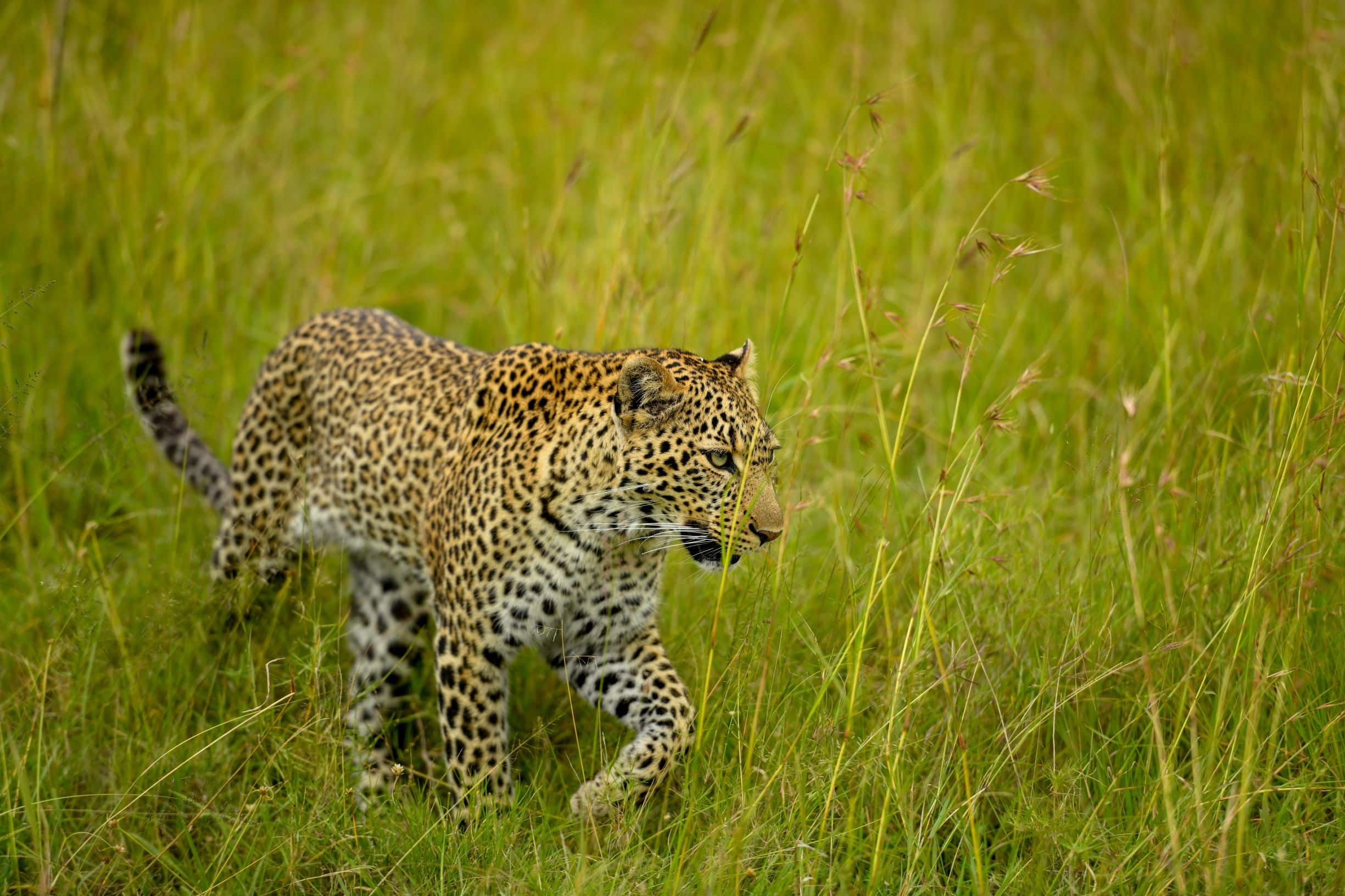
Masai Masai Off-the-Beaten-Path Safari
Masai Mara is one of the most famous safari destinations...
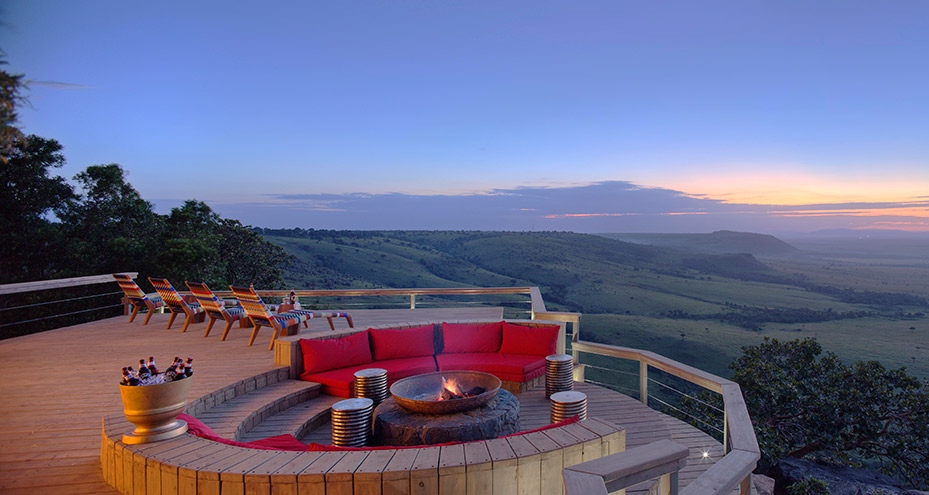
Top 5 Luxury Lodges in Masai Mara for an Unforgettable Safari Experience
Staying at one of these top 5 luxury lodges in...


